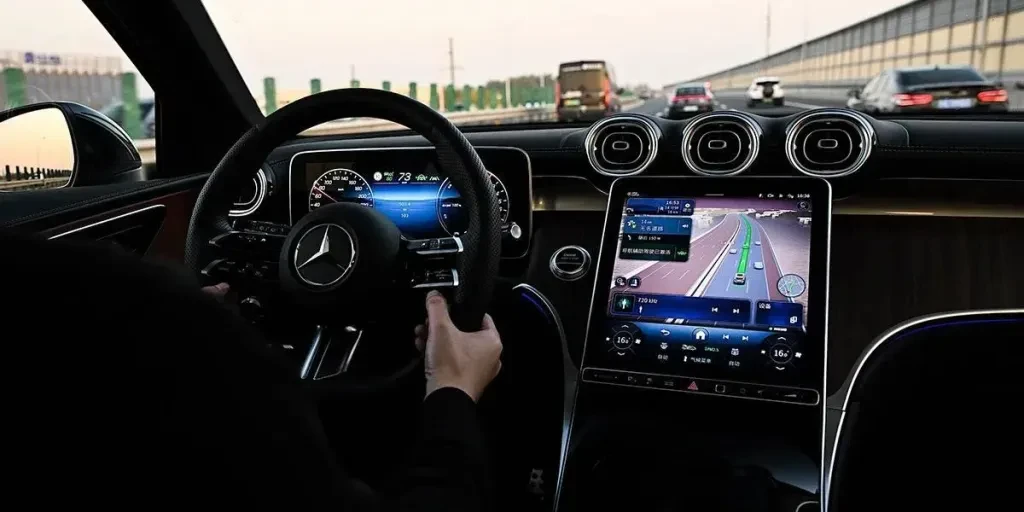“Smart technology is the hallmark of electric vehicles.”
“It’s difficult to implement smart features in fuel-powered vehicles.”
In today’s automotive market, which features both fuel-powered and electric vehicles, these statements are frequently heard. However, Mercedes-Benz attempted to offer a different answer. They believe that fuel and electric vehicles have never been opposites.
At the Chinese Auto Show in November 2024, Mercedes-Benz showcased three new models: the GLC Coupe SUV, the new EQE electric car, and the all-electric G580. These models are part of the 29 vehicles from the brand, covering fuel, pure electric, and plug-in hybrid powertrains. All promotional materials highlighted: “Regardless of fuel or electric, it’s still a Mercedes.”
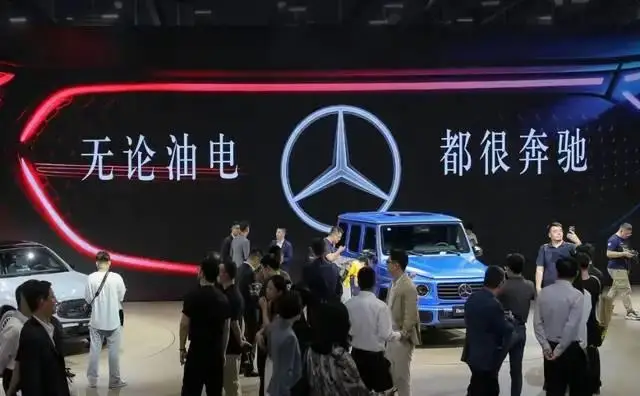
In an era where electric vehicles are facing challenges and hybrid vehicles are on the rise, integrating both fuel and electric powertrains has become the trend, whether to meet market demand or as part of a business strategy. From the Guangzhou Auto Show, it’s evident that smart technology is prioritized over electrification.
From Horse-Drawn Carriages to Autonomous Driving
In June 2020, Mercedes-Benz and Nvidia announced a partnership, where Mercedes would not only purchase Nvidia’s DRIVE AGX Orin computing platform but also collaborate with Nvidia to develop autonomous driving systems.
Facing Nvidia, the leader in smart driving chips, Mercedes-Benz showed its commitment by using the S-Class as a testing ground for new technology, even agreeing to share revenue based on sales.
However, three years later, while there has been progress, it’s likely not as fast as expected. Reports indicated that Mercedes-Benz once considered bringing in third-party partners for development, and David Nistér, a computer vision expert from Tesla, gradually faded from the leadership team, leaving the autonomous driving division without strong leadership.
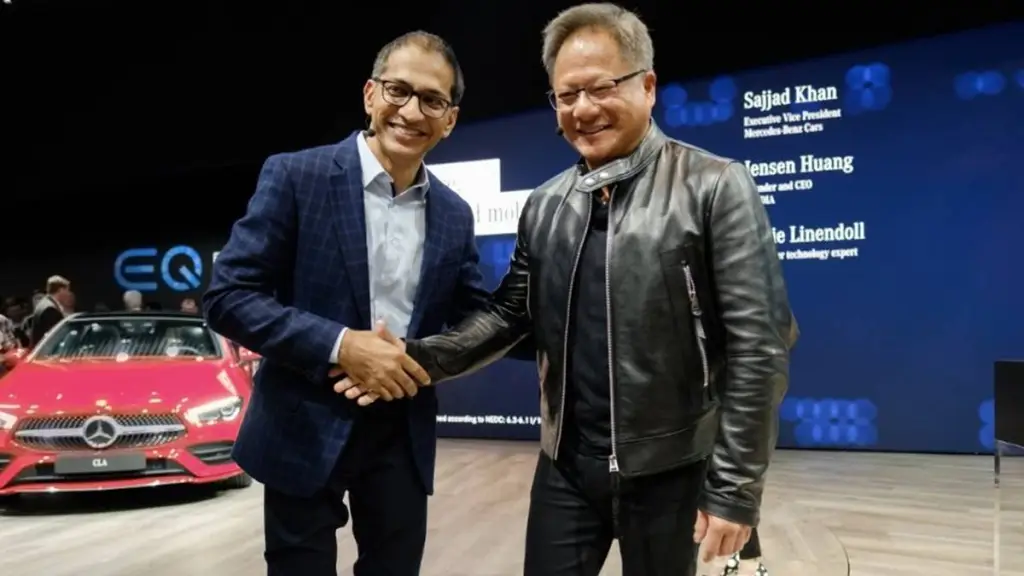
By the end of 2023, with AI advancements, autonomous driving experienced a renaissance, with various new players rolling out end-to-end solutions, even proclaiming “if there’s a road, it can drive.” At this point, Mercedes-Benz couldn’t wait any longer, so they turned to a Chinese supplier—Momenta.
Mercedes-Benz’s expert in Chinese manufacturing, Zhan Kai, explained to us that the new generation of L2+ navigation-assisted driving and smart parking systems were primarily developed by the Chinese team, making them well-suited for Chinese driving scenarios and styles, striking a balance between aggressiveness and conservatism.
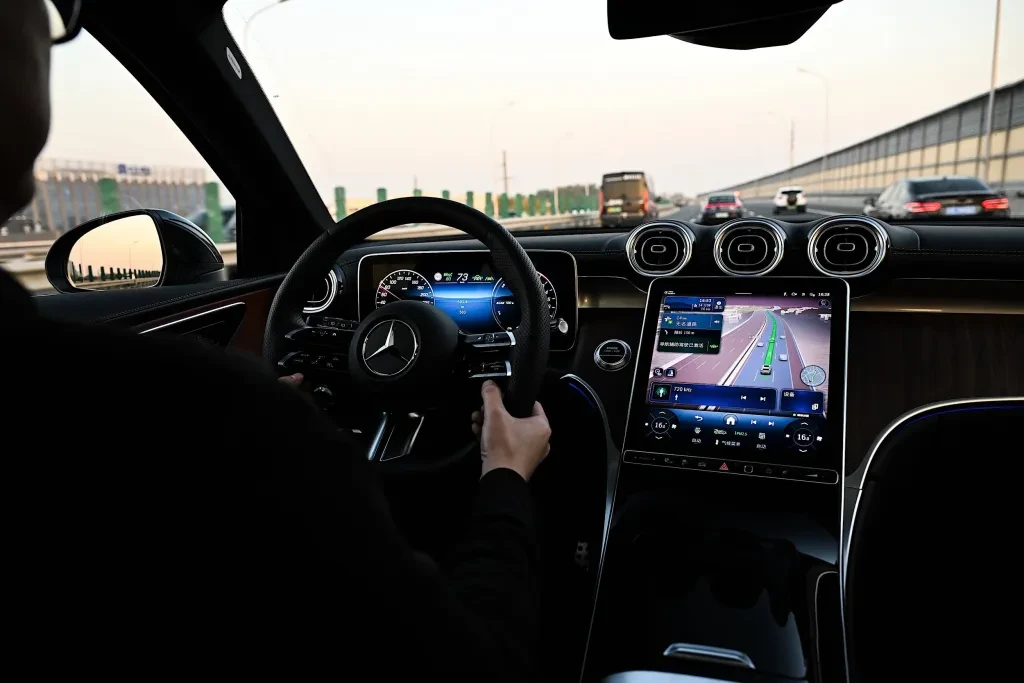
This is reflected in three key areas:
1. Seamless Lane Changing: Optimized for China’s road conditions and close following distances, the system can handle smaller lane change gaps.
2. Lower Lane Change Speed: Automatic lane changing can be activated at speeds as low as 50 km/h, ensuring driving safety.
3. Longer Hands-Free Time: The interval for hands-free reminders dynamically adjusts from 15 to 30 seconds based on real-time road conditions. The capacitive steering wheel allows the driver to simply hold it lightly to cancel warnings.
“It took only 12 months from project initiation to realization,” said Zhan Kai.
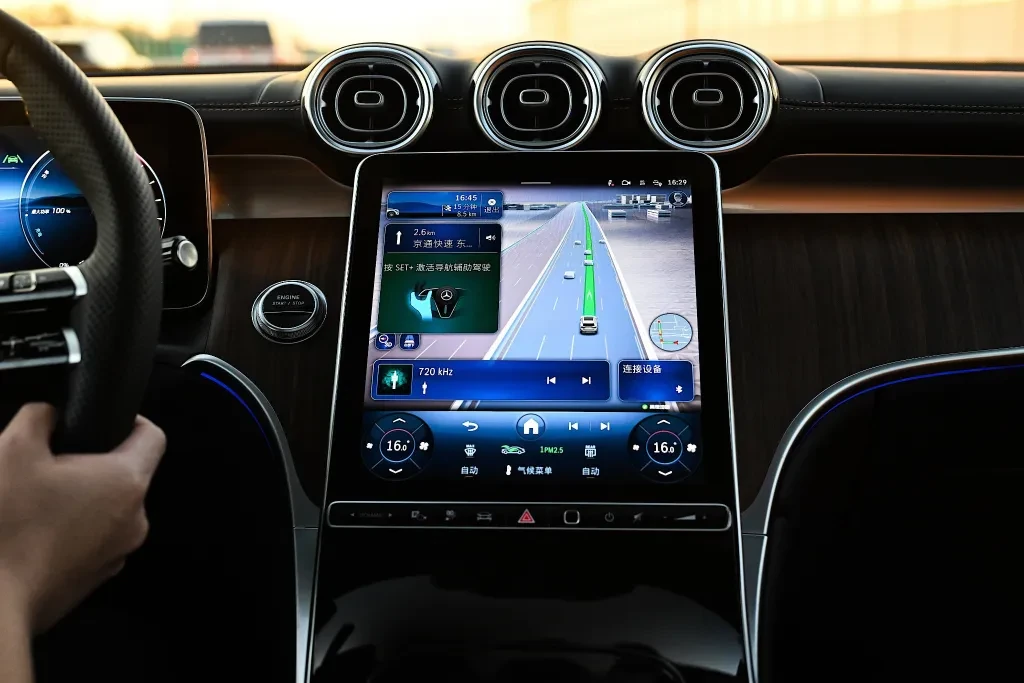
The application of intelligent driving and parking systems in Mercedes-Benz’s new generation models makes it the first luxury brand to mass-produce high-speed navigation-assisted driving. The newly launched Mercedes-Benz C-Class, E-Class, GLC-Class, and other mainstream fuel models are equipped with Mercedes-Benz’s new generation intelligent driving system.
From our actual experience, Mercedes-Benz’s new generation L2+ navigation-assisted driving system performs excellently in both longitudinal and lateral control, especially in longitudinal control.
In 1998, Mercedes-Benz pioneered the DISTRONIC distance control system, enhancing the longitudinal control capability of adaptive cruise control. In the new generation intelligent driving system, the following distance at each gear is not fixed but dynamically adjusts based on surrounding traffic conditions, and speed control aims for smoothness and comfort.
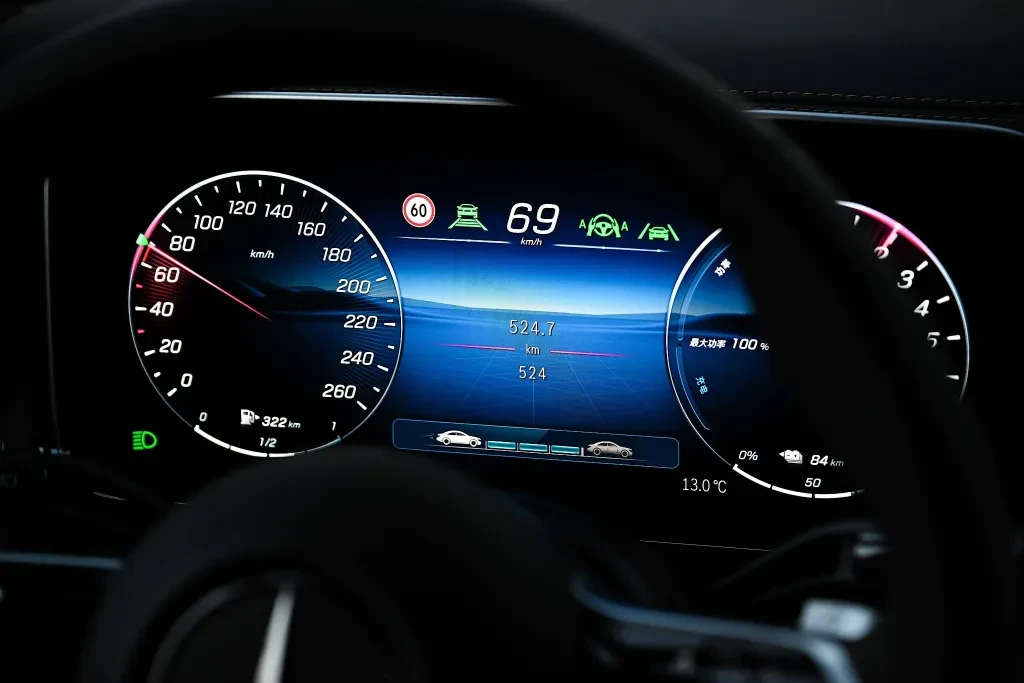
Another standout feature of Mercedes-Benz’s new generation intelligent driving is “human-machine co-driving.”
A product expert from Beijing Mercedes-Benz stated that Mercedes-Benz’s intelligent driving follows a “driver-centric” development philosophy. The driver can intervene in steering, acceleration, lane changes, and other operations at any time. The system will not override the driver’s intentions.
This may sound like a common feature, as all intelligent driving systems on the market prioritize the driver’s actions. But we all know that “usable” and “user-friendly” are two different things.
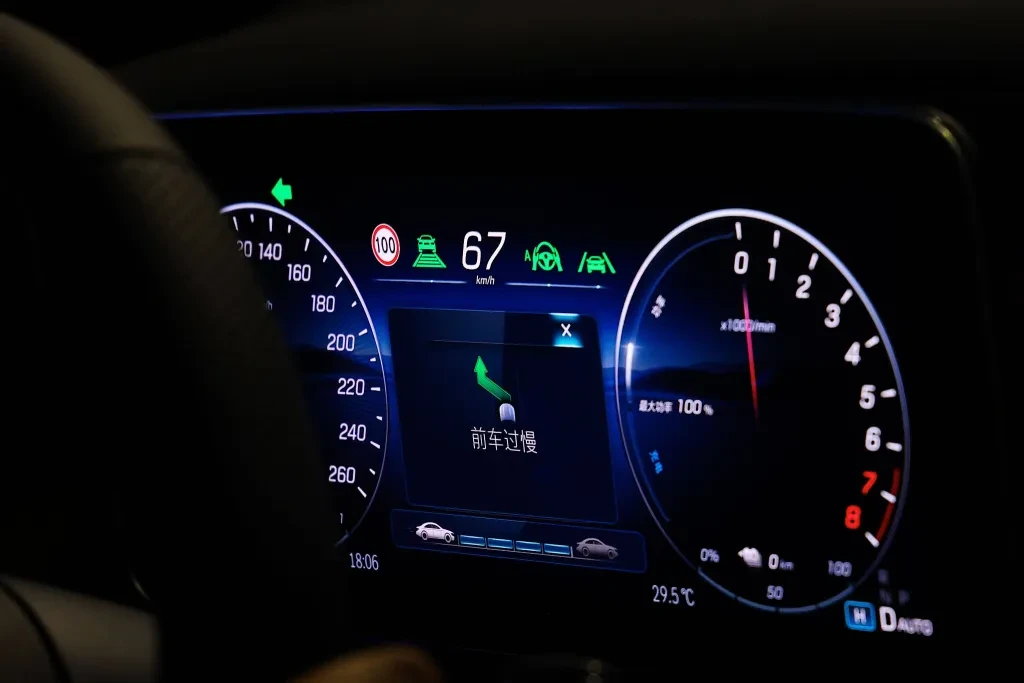
Specifically, when the driver wants to manually change lanes with the intelligent driving system activated, they usually need to turn on the turn signal first to smoothly turn the steering wheel. Otherwise, they need to forcefully turn the steering wheel, causing the intelligent driving system to downgrade.
Mercedes-Benz makes it different. When the intelligent driving system is activated, the steering feel of the Mercedes-Benz remains almost unchanged from when it is deactivated. The driver can even make slight left or right adjustments within the lane without using the turn signal, and the intelligent driving system will not disengage. This design is particularly useful when entering or exiting ramps.
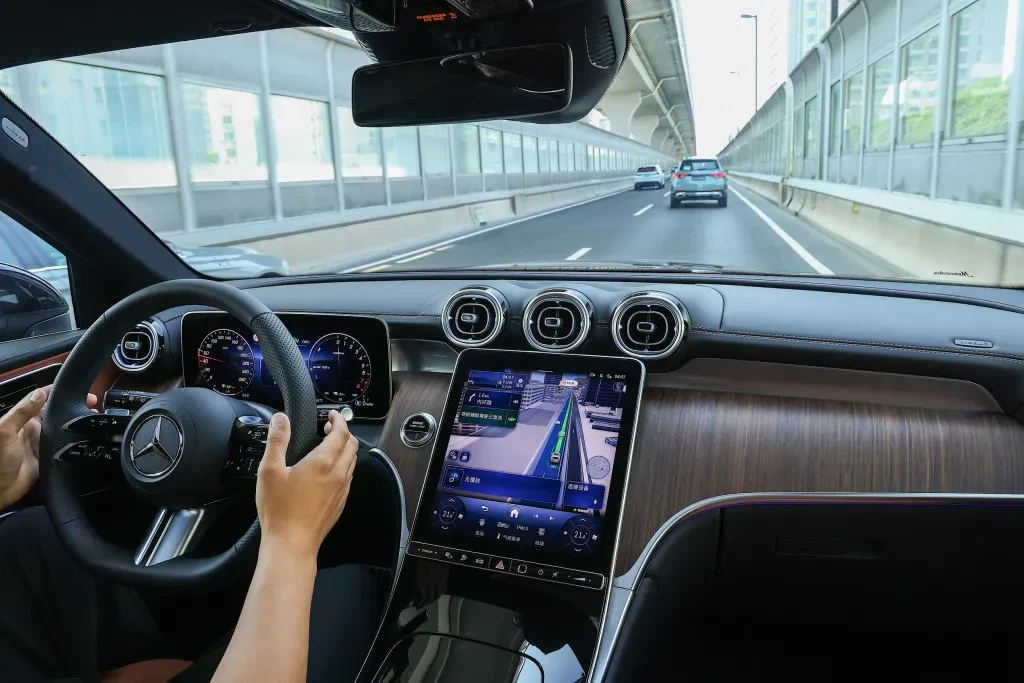
On the other hand, manually entering and exiting ramps also exposes Mercedes-Benz’s relative lag in the application of intelligent driving technology.
For brands like XPeng, Huawei, and Li Auto, which are at the forefront of intelligent driving, the challenges of highways and urban expressways are no longer an issue. Their focus has shifted to more complex urban road environments, such as roundabouts and U-turns. In comparison, Mercedes-Benz’s current intelligent driving system only covers highways and expressways and does not yet support active ramp navigation, roughly equivalent to the first-tier standards of 2022.
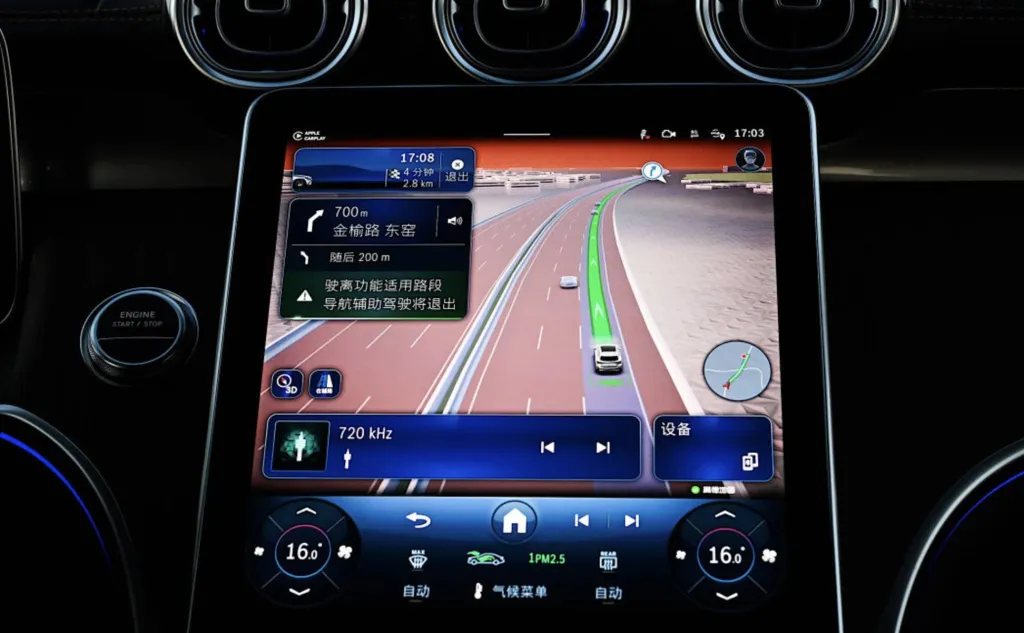
The good news is that Mercedes-Benz is catching up at a rapid pace.
In July 2024, just one day before XPeng released XOS 5.2.0, Mercedes-Benz showcased their latest advancements at their Shanghai R&D center. The video demonstrated that Mercedes-Benz’s L2++ intelligent driving system could handle non-aligned intersections, unprotected left turns, active pedestrian avoidance during right turns, active line crossing avoidance, and unprotected U-turns efficiently, completing tasks faster than the estimated navigation time.
In November, Ola Källenius, Chairman of the Board of Management of Daimler AG and Mercedes-Benz AG, along with Xin Wang, Head of Autonomous Driving and Connected Car R&D at Mercedes-Benz China, conducted a real-world test of the L2++ advanced intelligent driving beta version in Shanghai. During the test, the vehicle equipped with this system autonomously completed a 21-kilometer drive through downtown Shanghai in 50 minutes with zero interventions.
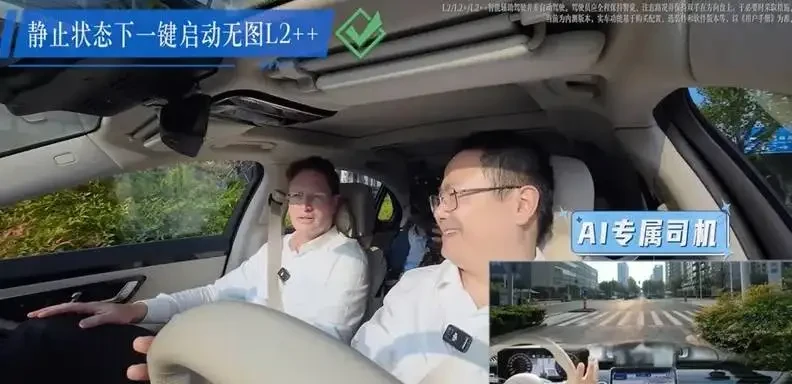
According to Mercedes-Benz’s plan, the L2++ intelligent driving system will debut on the all-new electric CLA model set for release in 2025. Wang Xin also revealed that, in addition to the L2++ system and the hands-free L3 system, the L4 intelligent driving system is currently under testing.
“We have entered a rapid development phase in intelligent driving, which is not achieved overnight but is the result of years of accumulated experience,” said Wang Xin.
Bringing “Skyscrapers” into the Car System
Mercedes-Benz has also made significant progress in smart cabins.
Following the launch of the 2025 long-wheelbase GLC SUV, the 2025 Mercedes-Benz GLC Coupe SUV was also unveiled at the 2024 Guangzhou Auto Show. This marks the near-complete integration of the Qualcomm Snapdragon 8295 cabin chip across Mercedes-Benz’s mainstream product line.
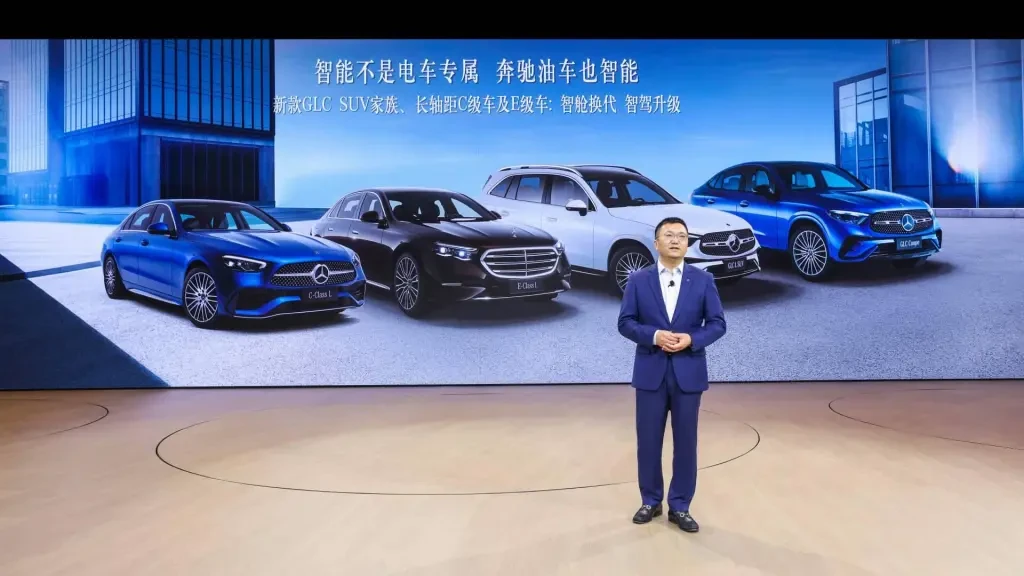
Thanks to the powerful performance of the Qualcomm 8295, Mercedes-Benz has upgraded its in-car system, MBUX, to the third generation. Like the intelligent driving system, the new generation of MBUX was developed with significant involvement from the Chinese research team, featuring many special functions.
First is the voice assistant, which Mercedes-Benz calls the “Mind-Reading Voice Assistant.”
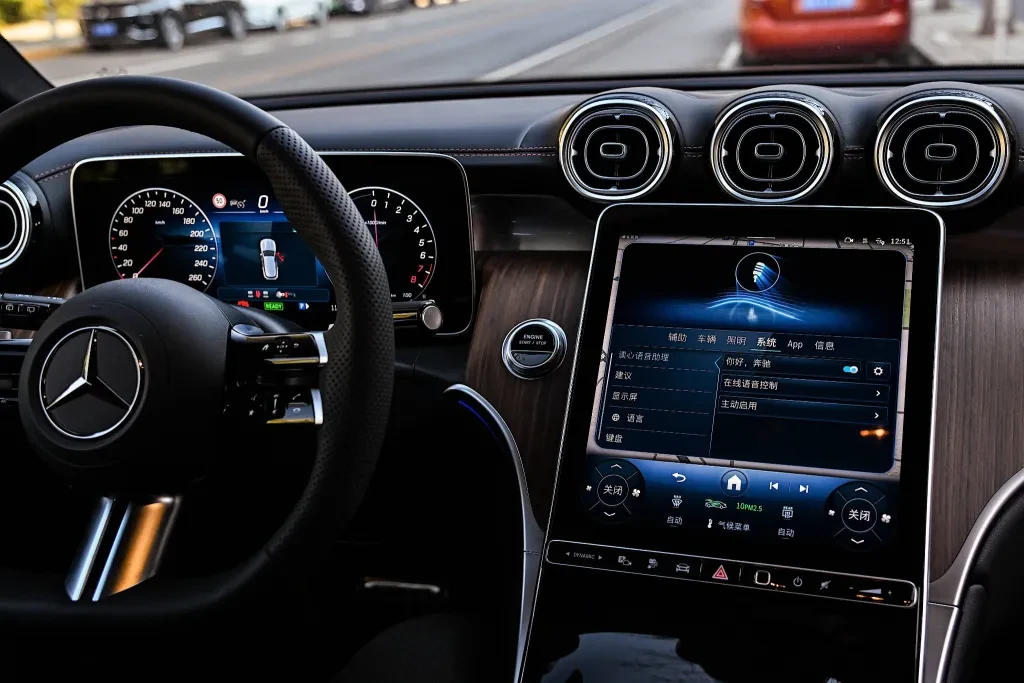
The third-generation MBUX voice assistant uses a “car-end + cloud-end” hybrid architecture, with the cloud providing stronger computing power and richer content services, while the car-end covers most in-car services when the network is poor.
In actual use, the most noticeable improvement is its faster response time, with most operations like air conditioning, windows, and entertainment systems completing within one second. Additionally, the full-scene wake-free function allows drivers to issue commands like “open the window” directly, without needing to say the wake-up phrase “Hey, Mercedes.”
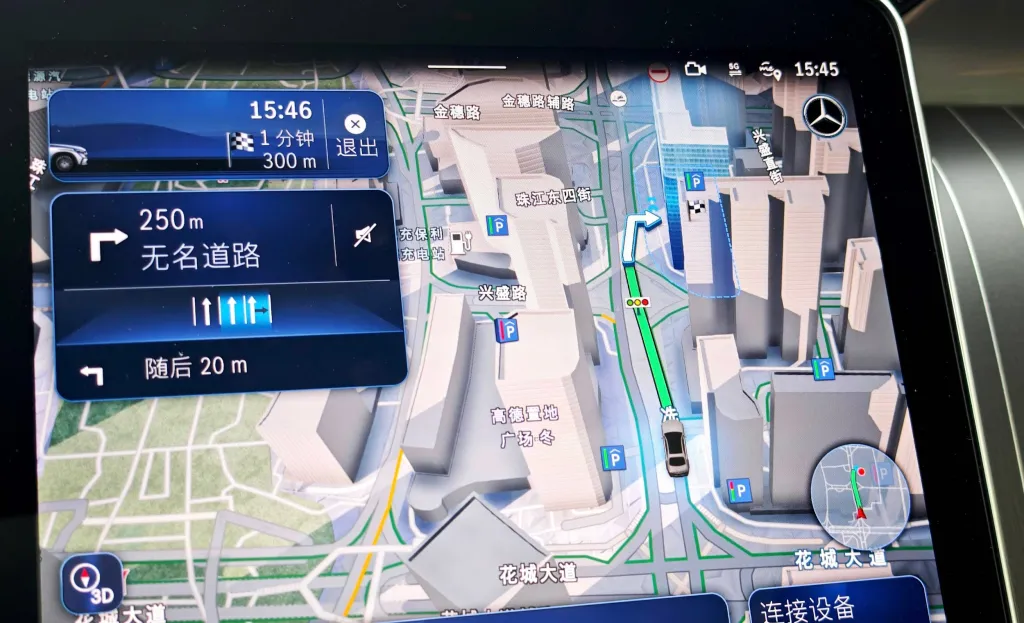
Another standout feature of Mercedes-Benz is its navigation system. Based on the 3D engine provided by Unity China, Mercedes-Benz has achieved high-quality map rendering on the new Gaode custom navigation interface, bringing real-time lighting effects, grass animations, and water reflections to the navigation page, essentially bringing a “real world” to the screen.
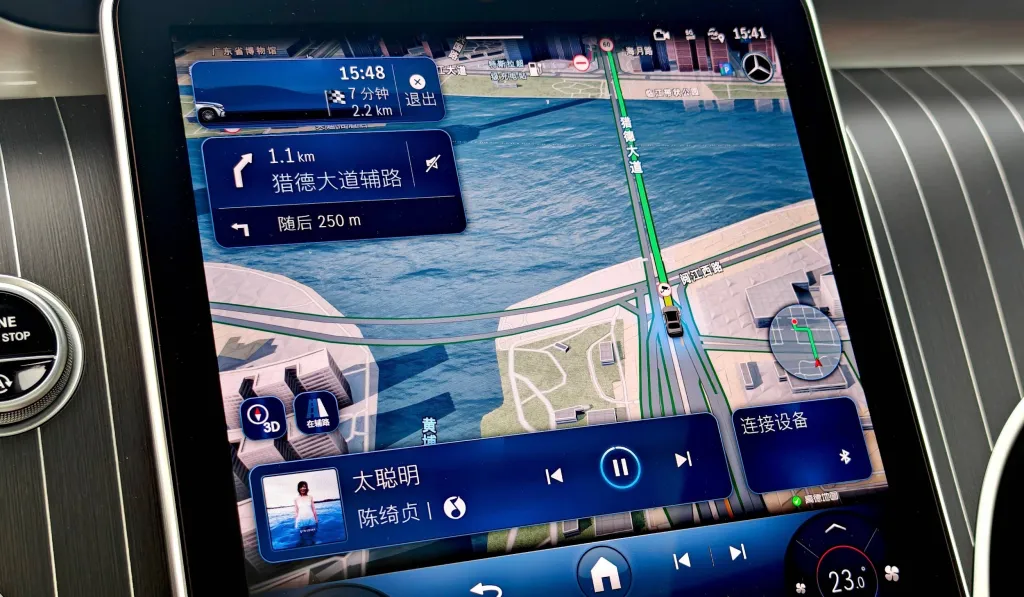
On the other hand, the third-generation MBUX map also features lane-level navigation exclusive to Chinese users, accurately identifying the vehicle’s lane on expressways and highways, providing detailed lane-level route guidance to prevent users from missing exits due to unfamiliarity with the route.
Mercedes-Benz has also introduced a “Scene” function to the third-generation MBUX system, similar to the task master in Li Auto, which can automatically execute corresponding operations based on various conditions set by the user, such as time, date, navigation, weather, and vehicle status.
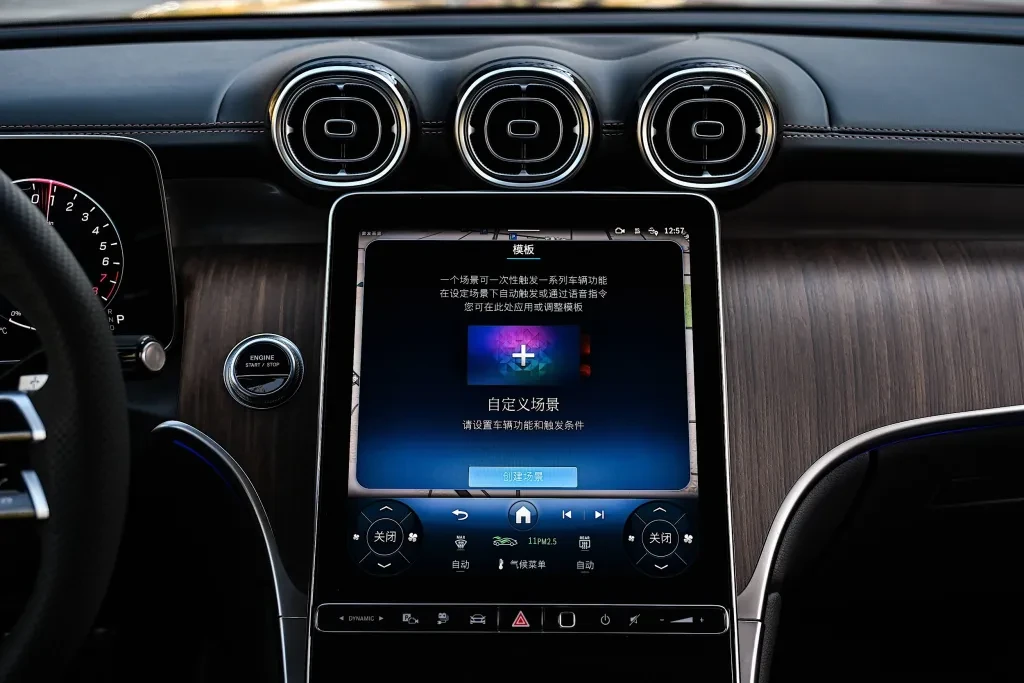
However, from the updates mentioned above, it is not difficult to see that aside from the unique and exquisite navigation, Mercedes-Benz is more about catching up and following in the smart cabin area rather than leading innovation. For example, the “Scene” function is not only something Li Auto has long achieved, but even GAC, which is relatively behind in intelligence, launched a similar function in 2022.
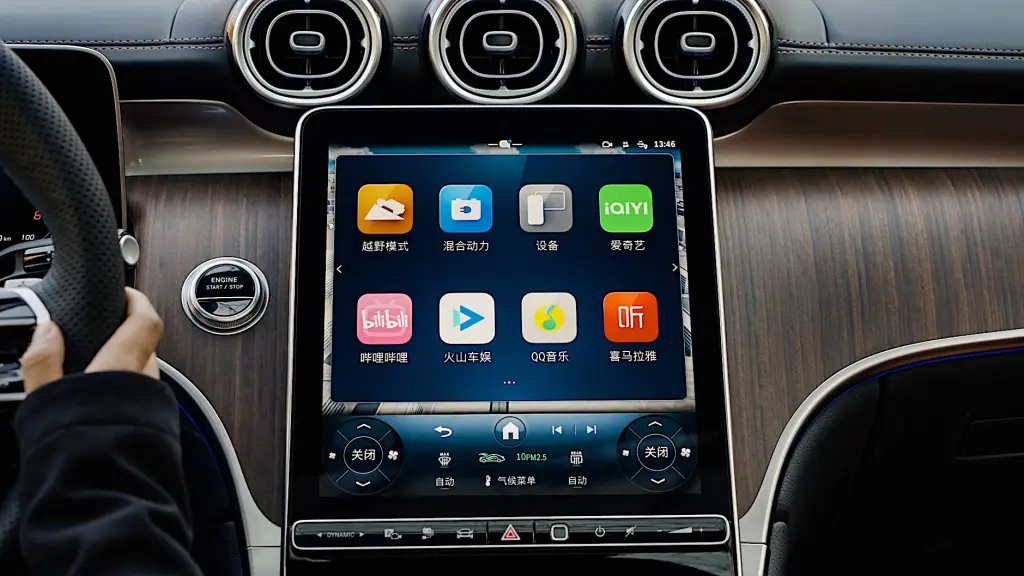
Nonetheless, the emergence of the new generation L2+ intelligent driving system and the third-generation MBUX has indeed made Mercedes-Benz one of the faster-developing luxury brands with broader intelligent coverage. Meanwhile, the brand power of the three-pointed star and the luxury quality standard for both fuel and electric vehicles can still buy Mercedes-Benz some time in its pursuit.
Source from ifanr
Disclaimer: The information set forth above is provided by ifanr.com, independently of Alibaba.com. Alibaba.com makes no representation and warranties as to the quality and reliability of the seller and products. Alibaba.com expressly disclaims any liability for breaches pertaining to the copyright of content.
